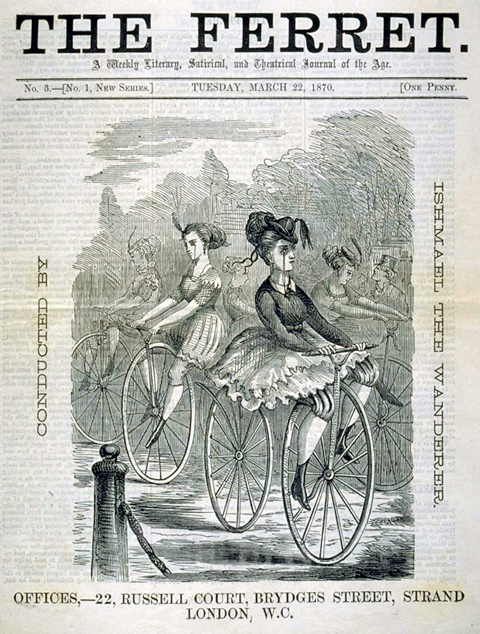
VIVE LE VELOCIPEDE
1868-70 was the heyday of the velocipede in France. This novel means of personal transportation caught the public imagination, and blacksmiths, carriage makers and wheelwrights across the country were inspired to construct either parts for velocipedes or complete machines.
French makers in this period are renowned for the high standard of their workmanship. Unfortunately, the Franco-Prussian War, which took place between 19 July 1870 and 10 May 1871, ruined the new velocipede-building industry in France, and production moved to England.
The International Velocipede and Loco-machine Exhibition at Crystal Palace in September 1869 saw over 200 machines, from Britain, France, Belgium, Germany and America on display. But, such was the popularity of this novel form of personal transportation in Britain, that British production soon outnumbered that of other countries.
1869/1870 French Velocipede
34″ Front Wheel
30″ Rear Wheel
(Now sold)
French velocipede manufacture stopped in July, 1870 when the war broke out between France and Prussia. The British bicycle industry was founded in 1869 and, as a result of the war in France, Coventry took over from Paris as the world centre of velocipede construction. British velocipedes were built to a high standard of engineering, though, in Britain, functionality took precedence over aesthetics.
This velocipede is manufactured to a very high standard, typical of many of the French machines. French velocipede builders had a head-start on their British contemporaries, and it’s amazing how many variations in style there were in France between 1868 and 1870. Unfortunately, most of them do not have the maker’s name and, with few catalogues printed at the time and the failure of the French industry in 1870, it’s not easy to identify them.
As French velocipedes were built before the war of July 1870, and production did not resume when the war ended, surviving French machines must have been stored safely for the duration, and maybe moved out of Paris. This velocipede has therefore survived three French wars with Germany.
It’s in excellent original condition, with traces of the original paint. Its novel features are a carrying rack fitted to the rear part of the spring, and a unique design for the front footrest. I assume that some velocipede riders had complained that, when coasting downhil, they had to lift their legs high to rest them on the usual style of footrest (see illustration below) and this maker responded by designing a footrest in a lower position. This top quality machine is ready to ride.
FEMALE VELOCIPEDE RIDERS
At first the press did not fully appreciate the achievements of this new machine and what it meant for the future. However, soon everyone started to recognize the importance of this new mode of transport – a velocipede may have been expensive, but it did not need food and stabling like a horse. And it could be used for independent long-distance travel. It required athletic abilities for long journeys, was dangerous down hills, and it scared the living daylight out of other road users and pedestrians …but a velocipede is actually surprisingly reliable. Velocipedes were raced extensively. In France, even women raced velocipedes! Below you can see the first ladies’ velocipede race (Le Monde Illustre, 1st November, 1868).

The American Harper’s Weekly (19th December 1868) covered the story too; but in their illustration, below, the women’s bare legs have been covered!

The weekly satirical magazine The Ferret added to comments of the day. Its cover of March 22nd, 1870, illustrates women riding velocipedes with extremely risque attire.























Le Velocipede Illustre 24 octobre 1869




























































